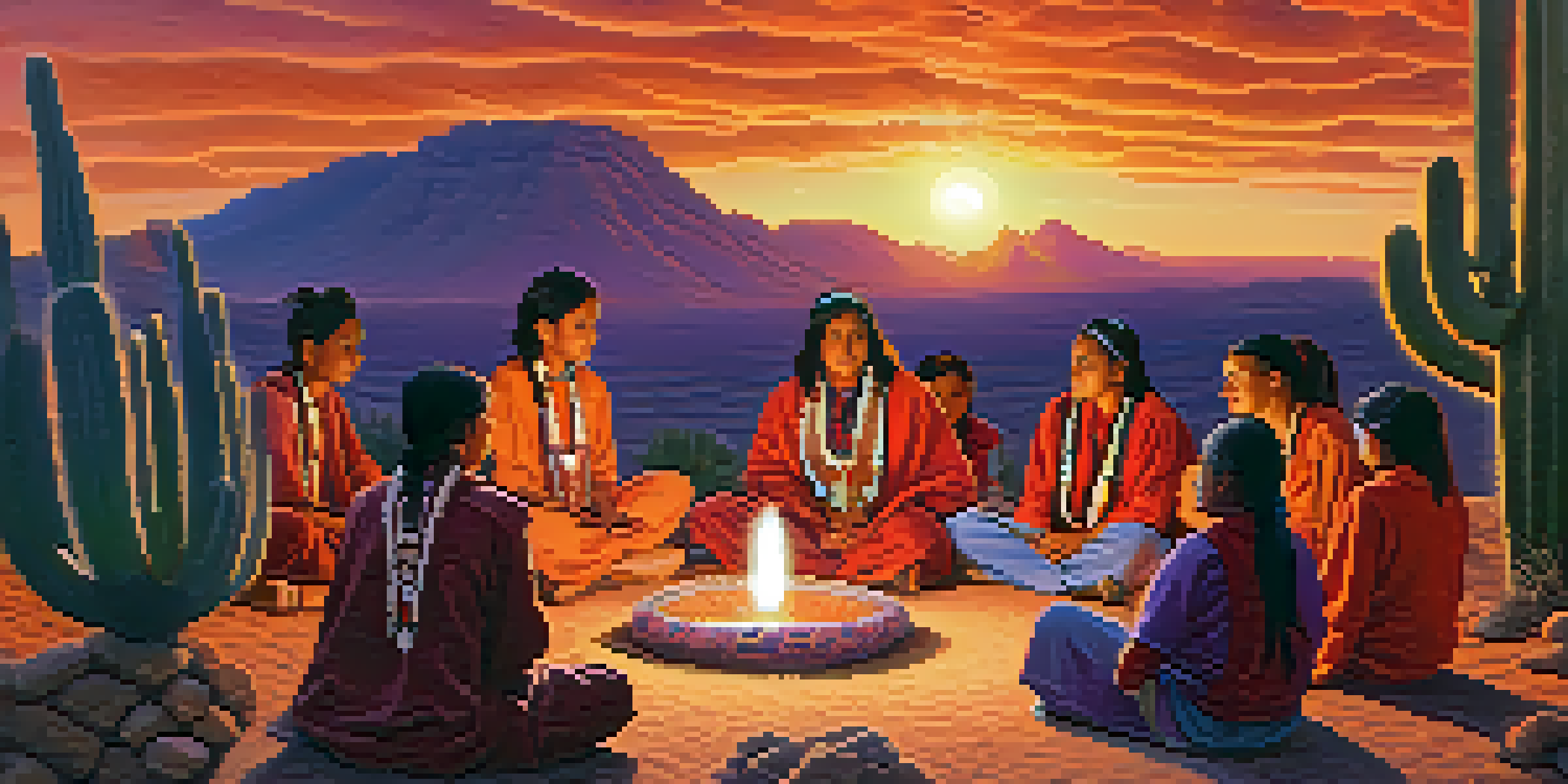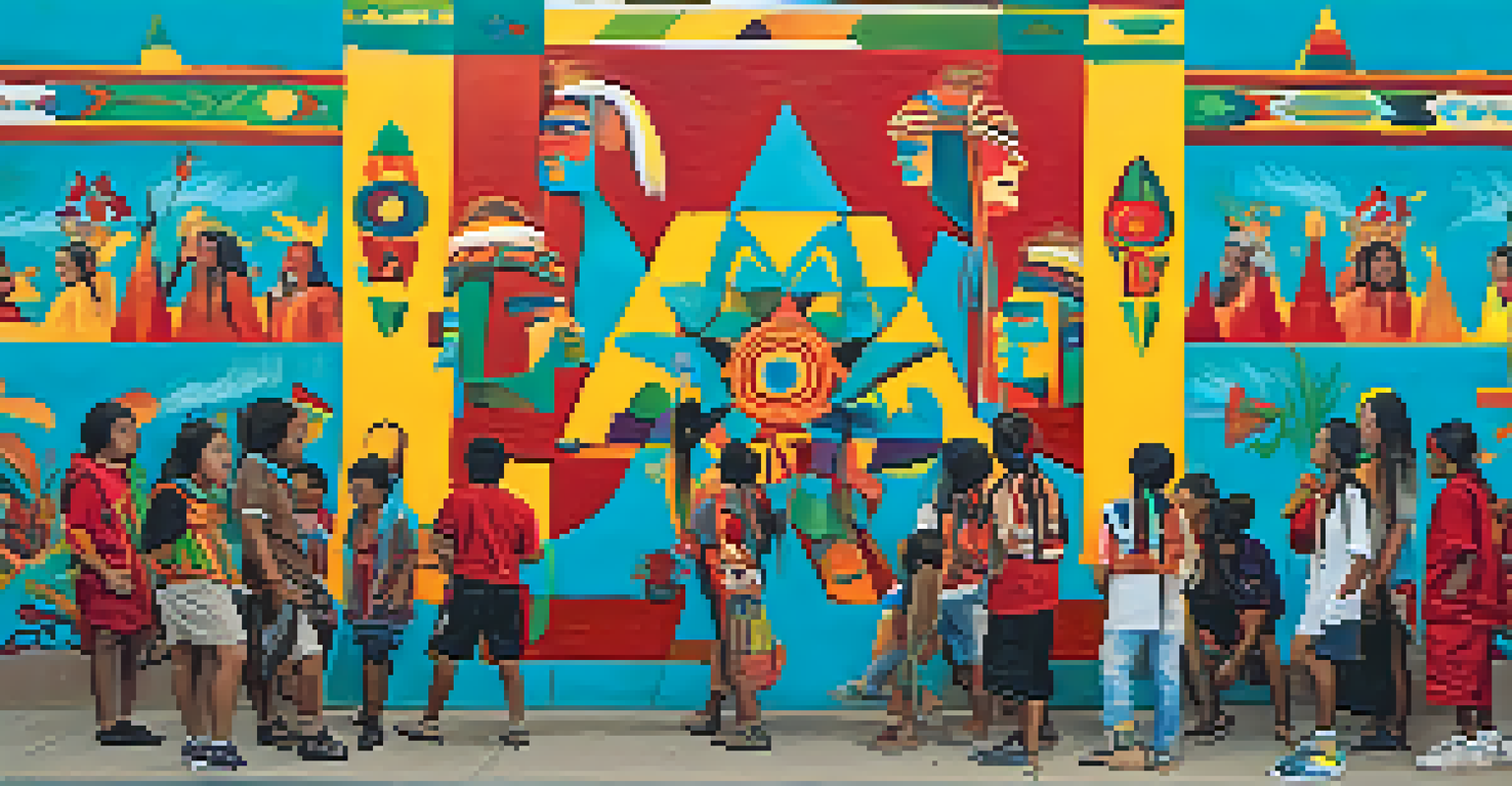The Role of Peyote in Indigenous Youth Identity Formation

Understanding Peyote: A Cultural and Spiritual Symbol
Peyote, a small cactus native to North America, holds significant cultural and spiritual value for many Indigenous communities. It is often used in traditional ceremonies, serving as a conduit for spiritual connection and healing. The consumption of peyote is not merely about the substance itself; it's deeply intertwined with the identity and heritage of Indigenous peoples.
Peyote is not just a plant; it is a bridge to our ancestors, a path to understanding our identity, and a source of healing.
For Indigenous youth, peyote represents a link to their ancestors and traditions. Engaging with this sacred plant helps them navigate their cultural identity in a contemporary context. It's a way for them to assert their heritage while also finding a sense of belonging within their community.
The rituals surrounding peyote use foster a collective identity among participants, reinforcing cultural ties. This shared experience is crucial for youth, allowing them to bond with community members and gain a deeper understanding of their roots.
The Historical Context of Peyote Use among Indigenous Peoples
To fully appreciate the role of peyote in Indigenous youth identity formation, it's essential to consider its historical context. The use of peyote dates back thousands of years, with various tribes incorporating it into their spiritual practices. This long-standing tradition has helped preserve cultural narratives and practices that might have otherwise been lost.

However, the introduction of colonialism presented numerous challenges to these traditions. Indigenous peoples faced significant oppression, which often included the criminalization of their spiritual practices. Despite these hurdles, the resilience of these communities has allowed peyote use to persist and adapt over time.
Peyote's Role in Cultural Identity
Peyote serves as a profound link for Indigenous youth to their heritage, fostering a sense of belonging and cultural pride.
Today, many Indigenous youth are reclaiming this cultural heritage, using peyote as a means of empowerment. They are not only acknowledging their history but actively participating in the revival of their cultural practices, thus solidifying their identity in a modern world.
Peyote Ceremonies: A Rite of Passage for Youth
Participating in peyote ceremonies is often seen as a rite of passage for Indigenous youth. These ceremonies provide a space for young individuals to engage with their spirituality and cultural heritage in a profound way. Through the collective experience, they learn about their identity and the responsibilities that come with it.
The spirit of peyote lives in our culture; it teaches us resilience and helps us reclaim our narrative in a modern world.
The ceremonies are often guided by elders, who play a crucial role in providing wisdom and teachings. This intergenerational connection fosters respect for tradition and encourages youth to embrace their cultural identity. It’s a beautiful way to bridge the gap between generations, ensuring that cultural knowledge is passed down.
As youth navigate their own identities, these ceremonies offer guidance and support. The lessons learned within this sacred space help them deal with the complexities of modern life while remaining rooted in their cultural beliefs.
Mental Health and the Healing Properties of Peyote
Indigenous youth often face unique mental health challenges due to historical trauma and ongoing socio-economic issues. Peyote is believed to have healing properties, both physically and mentally, offering a natural avenue for coping. The spiritual aspect of peyote use can promote mental well-being, fostering a sense of peace and connectedness.
Engaging in peyote ceremonies allows youth to express their emotions and connect with their spirituality. This process can be therapeutic, providing them with an outlet to process feelings of isolation or distress. In many cases, youth report feeling a renewed sense of purpose and identity after participating in these ceremonies.
Healing and Mental Well-Being
The spiritual use of peyote in ceremonies promotes mental health, allowing youth to process emotions and build supportive communities.
Moreover, the communal nature of these gatherings enhances the healing process. By sharing their experiences with others, youth can build supportive networks, which are essential for mental health. This sense of community reinforces their identity and helps them navigate their challenges.
Peyote and Contemporary Indigenous Identity
As Indigenous youth engage with peyote, they are simultaneously navigating a complex contemporary identity. The challenges of modern society often clash with traditional values, creating a unique space for exploration. Peyote serves as a grounding force amidst this complexity, helping youth integrate traditional practices into their modern lives.
Through the lens of peyote, youth can explore what it means to be Indigenous today. This exploration often leads to a redefined understanding of their identity that honors both their heritage and their contemporary experiences. By embracing this duality, they can forge a path that is uniquely their own.
Furthermore, the visibility of peyote in popular culture can sometimes complicate its sacred status. However, for many Indigenous youth, it remains a powerful symbol of resistance and pride, allowing them to claim their identity in a society that often marginalizes their culture.
Challenges Facing Indigenous Youth and Peyote Use
Despite the positive impacts of peyote on Indigenous youth identity, various challenges persist. Misunderstandings and stigma surrounding peyote use can lead to discrimination, even within Indigenous communities. This stigma can create barriers for youth seeking to engage with their cultural practices.
Additionally, the legal status of peyote can be complicated, especially in areas where its use is restricted. This can limit access for youth who wish to participate in traditional ceremonies. The ongoing fight for the recognition of Indigenous rights often intersects with the struggle for the right to use peyote.
Challenges and Future of Peyote
Despite its significance, peyote faces challenges like stigma and legal restrictions, yet Indigenous youth are adapting its use for modern identity.
Moreover, the commercialization of peyote can dilute its significance, leading to further misunderstandings. As youth advocate for the preservation of their cultural practices, they must also confront these challenges head-on, striving to protect their identity and traditions.
The Future of Peyote in Indigenous Youth Culture
Looking ahead, the role of peyote in Indigenous youth culture is likely to evolve. As more young people embrace their heritage, peyote will continue to serve as a vital tool for identity formation. This evolution will require a balance between tradition and modernity, ensuring that peyote retains its spiritual significance.
Indigenous youth are increasingly using technology and social media to share their experiences with peyote and cultural practices. This modern approach can help raise awareness and educate others about the importance of peyote in their lives. By sharing their stories, they can inspire a new generation to explore their identities and cultural roots.

Ultimately, the future of peyote lies in the hands of Indigenous youth who respect its traditions while also adapting to contemporary realities. Their journey will undoubtedly shape the ongoing narrative of peyote and its significance within Indigenous identity.